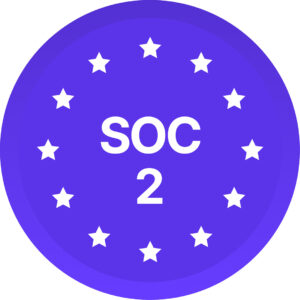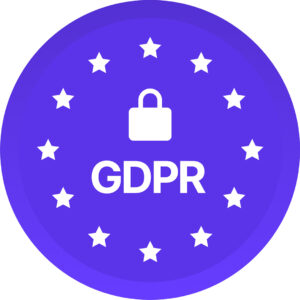If you have a Diversity, Equity, and Inclusion (DEI) strategy at your organization or want to create one, DEI surveys deserve to be front and center in your action plan. A DEI survey can gather the crucial data you need. With 46% of LGBTQ+ workers reporting they are closeted at work and only 39% of employees living with a disability disclosing their health status to their employer, a survey may be one of the only ways to find out whether your processes and operations are really serving your workers.
A DEI survey can also determine hidden pain points, such as from biased management, a lack of career development, harassment, or inflexibilty. If you’re launching a DEI initiative, regular polls let you track your progress and pivot as needed.
It’s not as simple as just launching a DEI survey, though. To get results you can act on, you need to make sure you do some DEI survey prep first. Prep makes sure your team is ready and you’re poised to get the metrics you to make informed decisions that will drive change.
Preparing Your Organization for a DEI Survey
Your DEI survey prep will depend on your company’s size and on how long you’ve had (or if you have) a DEI strategy. The more mature your DEI strategy, the more complex the groundwork might need to be before you launch your survey. So let’s take a closer look at what you need to consider before sending out a DEI survey.
Stage 1: Awareness
Before you create any survey, you need to get stakeholders on board. Leadership, management, and other stakeholders should hold frank discussions about why and how DEI strategies will be implemented. The discussions should also cover what systems you need in place. By the time you get metrics in hand, you should be prepared to act on what you have found out and have a clear vision for what you’re trying to accomplish.
Stage 2: Action
Before you start surveys, you need someone to champion and take ownership of the DEI strategy. You also need a budget and an understanding of what kinds of steps you can take next. Setting up a DEI council and Employee Resource Groups (ERGs) is also helpful at this stage. It gives your survey data a place to go.
This is the stage where you’re developing your survey, too. That itself will require several steps.
- Make your survey anonymous. An anonymous survey gives workers the freedom to be open & vulnerable, even if they have something difficult to share. Choose a system that will help protect respondents’ identities.
- Choose questions carefully. The questions you ask will depend on your goals with the survey. You will want to word them carefully & ask just enough questions so you can get metrics without having the survey take too long.
- Give employees a chance to answer, or not. Of course, you want every employee to answer every question. But some data is better than no metrics at all, & by giving workers the choice to opt-out of specific questions or the entire survey, you’re building trust & potentially getting better answers.
- Make it possible to break down the answers. If your organization is large enough, choose a survey system that lets you break down responses by role, department, & other characteristics. This is invaluable because it allows you to compare diversity & inclusion at the leadership level, among managers, among new employees, & among other groups.
- Communicate the survey well. Let your team know ahead of time that you’ll be using a survey. Give everyone a chance to ask questions, if they have any. Ahead of time, explain what the survey’s goal is & how the data will be used. Explain how answers will be kept anonymous, so everyone feels confident taking part.
- Deploy your survey. Once you have your survey ready & have spoken to your organization about it, it’s time to send out the survey & await answers.
Optimizing every step of this process doesn’t have to be guesswork. Partnering with Diversio can help you get data from your teams by making the process seamless and removing the guesswork. Diversio can make sure you ask the right questions, can protect workers’ anonymity, and can deliver the metrics in a way you
Stage 3: Advancing Forward
Once you’ve launched your survey, you need to move forward, acting on what you’ve found. The ideal situation is to use the results to implement changes in your programming, policies, and operations, so changes show up throughout your company. For example, if you find out that underrepresented groups in your company are challenged with Career Development, and Fair Management, you can put into place career development plans, and offer unconscious bias training for all people managers, as well as look at your feedback process to ensure it’s fair.. You might want to consider how your services or programs could be changed to create a better experience for workers and customers.
Advancing also means you may want to share data. Storytelling is a powerful technique that can help you explain the data to your teams and stakeholders so they not only understand it but are inspired to act on it. Putting a human face to pain points and using human language instead of jargon engages your team emotionally, so they want to make changes.
Part of advancing forward also means having a system in place for follow-up surveys. Once you’ve acted on the data, you have a baseline for comparison. More surveys help you evaluate how well you’re doing and can help you find any additional pain points.
DEI Surveys: Should They Be In-House or Should You Use an External Provider?
Once you’ve decided to conduct a DEI survey, one of the first considerations to make is if you’ll be crafting, deploying and analyzing it in-house or if you’re going to use an external provider. While it initially might make sense to do everything internally, consider these risks:
- A lack of expertise leading to inaccurate questions and unclear response data
- Complying to local data security policy can be complicated and when not executed properly can lead to legal repercussions
- Processing data into meaningful action requires a significant amount of resources
- Overwhelming results can make it difficult to stay motivated
If you opt to use an external provider, though, there are many benefits, including:
- Higher response rates because of guaranteed anonymity
- Expert guidance from survey launch to implementation and program development
- Cross-border data collection expertise to ensure you’re complying to local policies
- Meaningful data insights to inform actionable recommendations to reach your DEI goals
- Easy and seamless user experience from survey deployment to data analysis
If you’re serious about securing actionable insights from your DEI survey, oftentimes it’s best to seek out an experienced external provider.
How Diversio Can Help
Launching a DEI survey isn’t as simple as sending out an online poll to your team—at least, it’s not that simple if you want real results from your efforts. Thoughtful DEI prep ensures you’re set up to act on what you find and it ensures you’re asking the right questions.
Diversio offers the world’s first AI-powered platform. We know how to effectively survey your teams and how to gather, analyze, and benchmark data while protecting workers’ privacy and anonymity. We make sure your teams feel empowered to take part and we give you the tools to analyze the metrics in depth. Our goal is to lead you to actionable and measurable change, which is why we offer you a range of field-tested programs based on your organization’s pain points. Right in the Diversio Platform, you can set your goals and adopt programs to create measurable change.
Find out what diversity and inclusion could look like at your organization. Schedule a demo today to see what Diversio can do for you.

